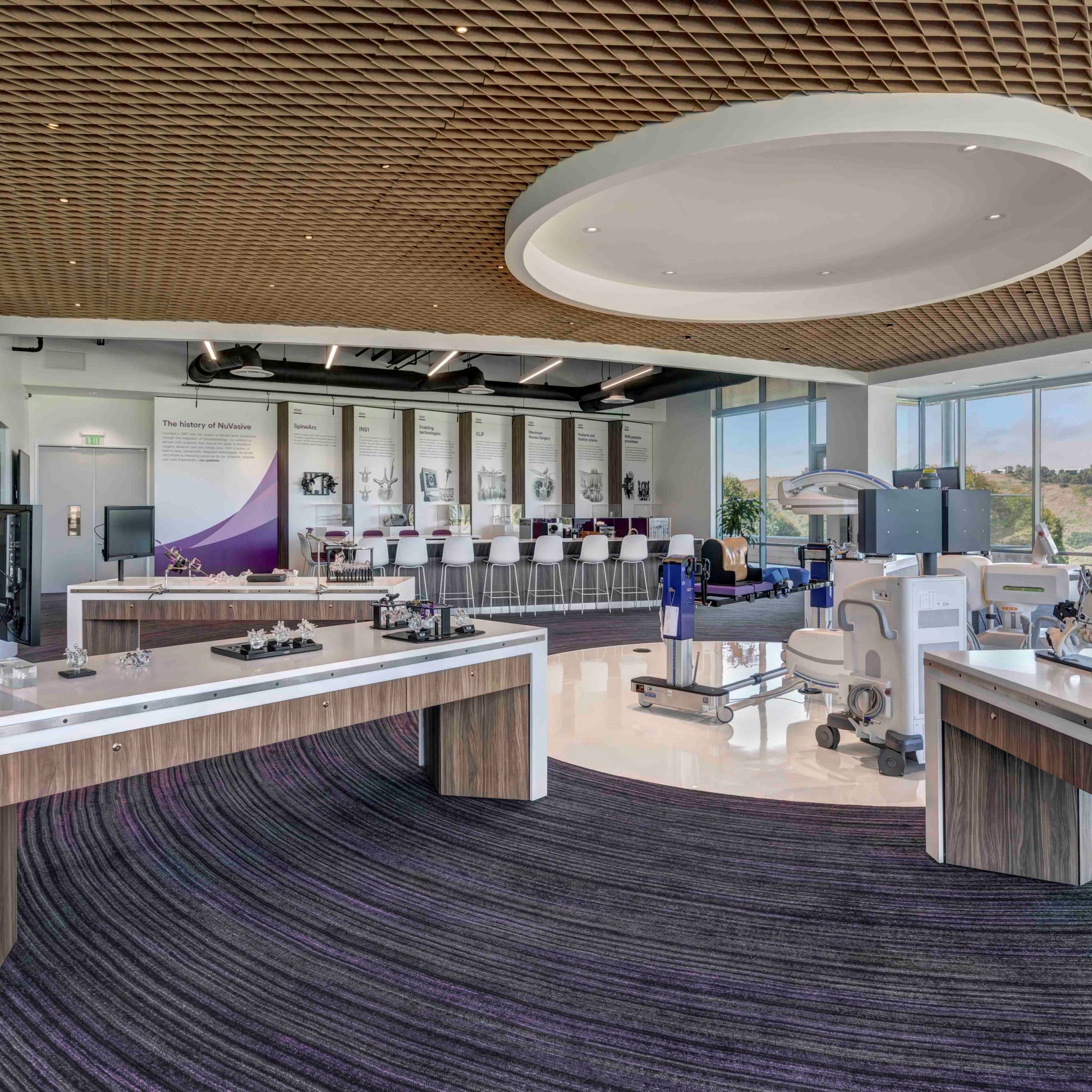By Joe Grosshart, president of Good & Roberts, LLC
Over the past 40 years, Good & Roberts, LLC (G&R) has been trusted among Southern California’s leading private biotech companies and higher education institutions to reimagine existing spaces into fully equipped life science facilities and medical labs. Some of our clients have included Dexcom, Prometheus and University of California, San Diego.
Recently completed construction in the San Diego market includes a $4 million project for medical device giant NuVasive to convert a three-story building into a showroom and surgery suite, and a $2 million renovation to an existing 15,000 square-foot building for Cell Applications, Inc., an industry leader in providing cell cultures for medical research distribution. Sharp Hospital has also selected our team for design-build services on a new imaging center and new pharmacy, and we continue our long-standing relationships with firms such as Ionis Pharmaceuticals and Abbott Labs.
There’s no doubt that the biomedical industry in Southern California continues to flourish with a strong demand for more labs and medical facilities. Here’s a look at how this is impacting the construction industry, key markets with the largest growth and trends currently shaping the development of life science facilities.
Southern California Leads R&D Construction
California is a global leader in the life sciences industry, directly employing more than 300,000 people across 3,400 companies, universities and biological research institutes. Three of the major hubs, including San Diego, Orange County and Los Angeles, are heading the market in Southern California. In 2020, 20% of all domestic research and development (R&D) expenditure was allocated toward medical equipment, biotech and pharmaceuticals – and it is the growing demand for R&D facilities that is urging the construction industry to keep up. San Diego has proved a hot market for large lab construction accounting for 72% of all Southern California-based R&D projects, according to CBRE. Los Angeles and Orange County split the difference at 16% and 12%, respectively.
Spec Spaces and Repurposing
Growth of the biotech industry – particularly in the San Diego market – has made it quite challenging for companies to find sufficient lab space to meet the demands of their increasing R&D investments. To help solve for this, builders are constructing standardized spec suites – move-in-ready spaces – enabling companies to begin R&D more promptly as opposed to waiting for a build-to-suit solution.
An emphasis on time and cost savings also contributes to the number of companies opting to repurpose existing buildings. In Southern California alone, 52% of life science clients are choosing to convert existing space, rather than build an R&D lab from the ground up. But oftentimes, this is easier said than done. As a contractor, it is our responsibility to consider the limitations of an existing space and work closely with the architect to assess the feasibility of a space conversion. For example, medical labs require a larger amount of interstitial space to accommodate electrical and mechanical design. This extra space above the ceiling is vital to make room for ductwork for AC/heating systems, piping for medical gasses and specialty fluids, or materials.
Navigating Occupied Remodels
Another key challenge to converting existing spaces into life science facilities is that these environments are often occupied during construction. Over the years and more recently, our team has been put to the challenge of improving labs in the middle of a building or campus where entire teams surround the construction site. The safety and protection of the employees and the biomedical research are our top priority, so it’s critical to find opportunities and solutions that limit disruption for the company and its researchers. This can be addressed by defining challenges and resolutions early in the design stage, such as installing barriers against contamination, planning highly interruptive tasks around worker schedules, and communicating disruptions in advance, so there are no surprises.
Accelerated Schedules
With R&D constantly and rapidly evolving, it is essential that our construction schedules are accelerated, too. The best way we, as the contractor, can do this is by partnering early on with the design team. By taking a design-build or design-assist approach, we can advise ways to maintain proforma budgets, identify opportunities for value engineering, confirm schedules and forecast long lead time on equipment that may impact final delivery. It’s the collaborative management of these items that ensures a project will be on time and on budget, without sacrificing the integrity of the end product.
The biomedical and life sciences industry is booming across Southern California, and Good & Roberts is honored to work with leading life science institutions to navigate complex tenant improvements and bring to life state-of-the-art facilities that support organizations and researchers as they pursue critical studies, discover innovative solutions and work to find treatments.
